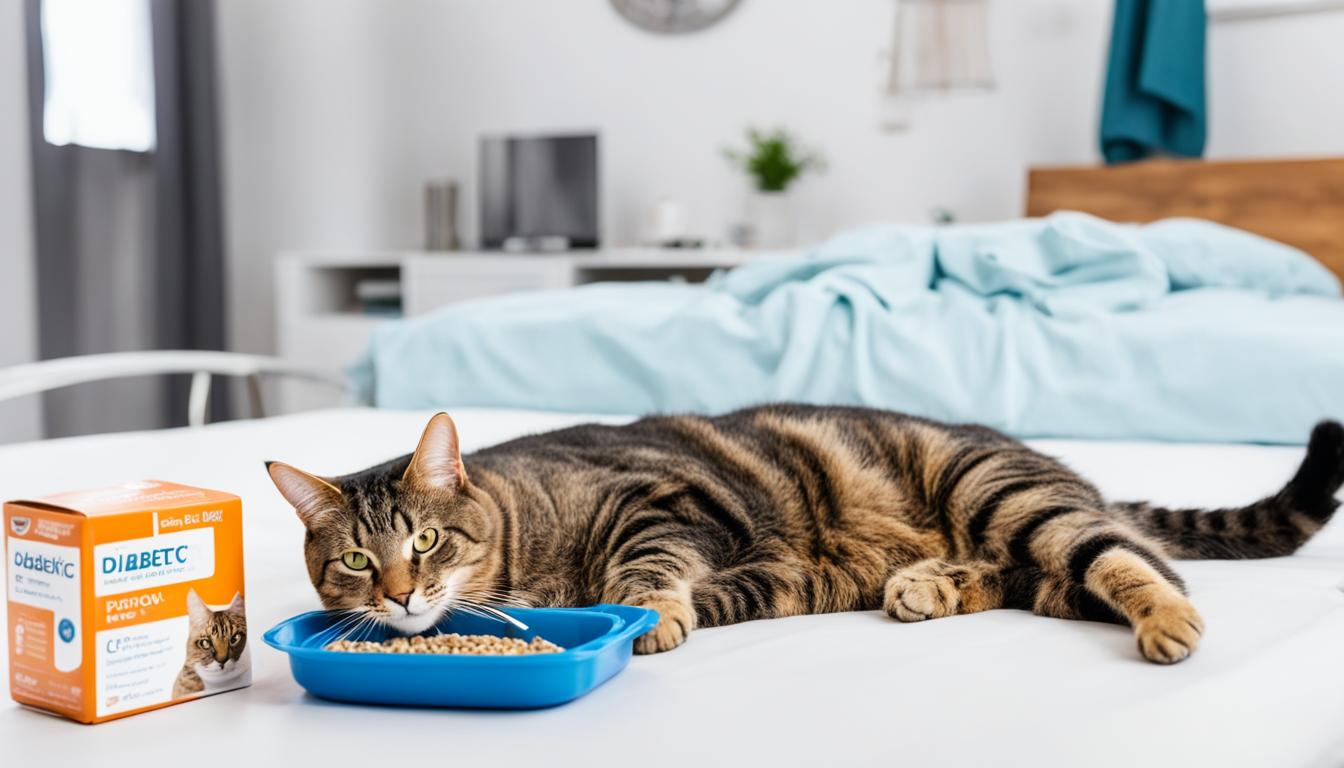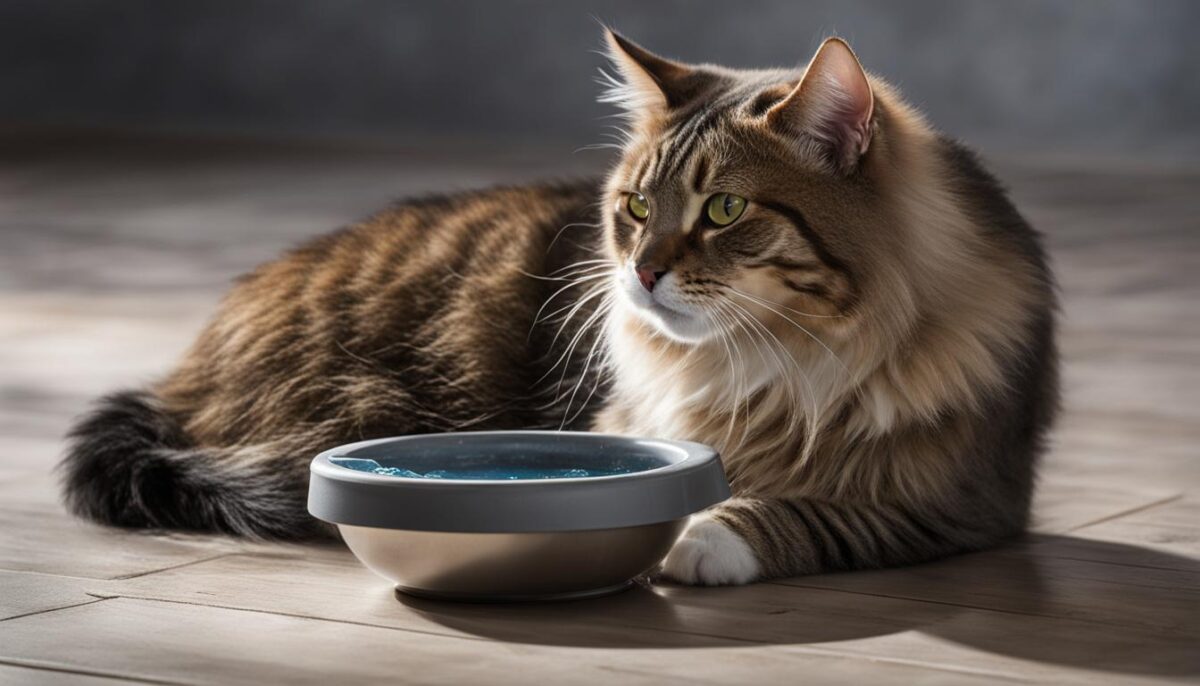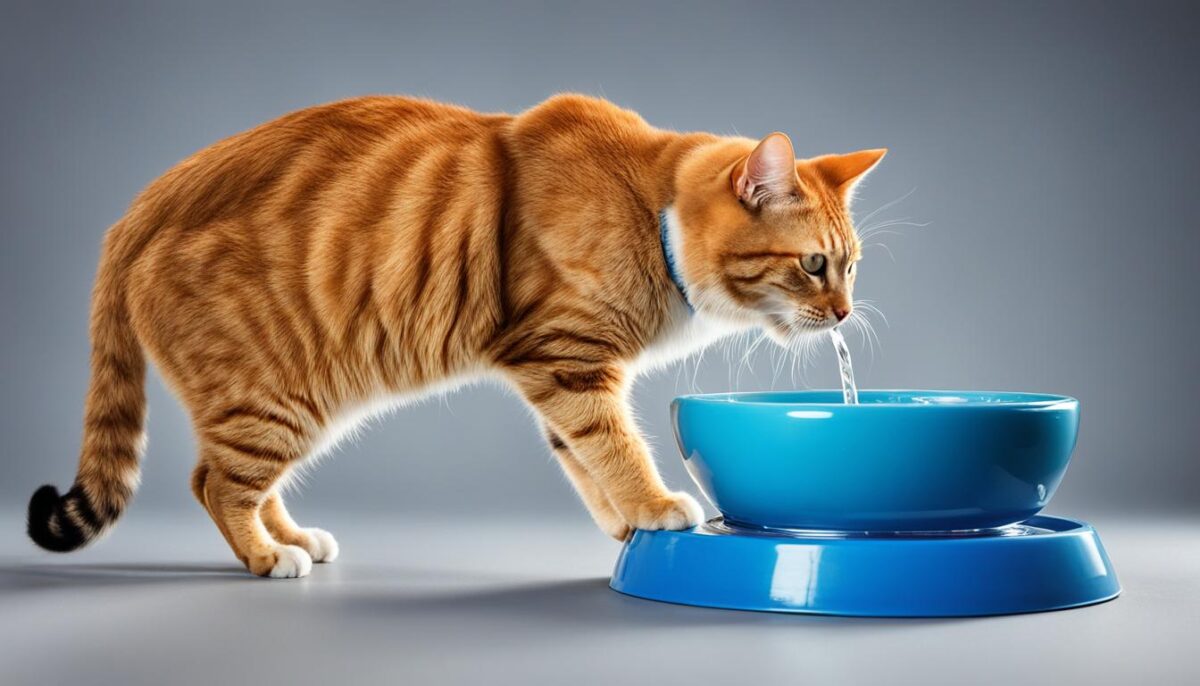If your cat has been acting strangely, it could be a sign of diabetes. Cats with diabetes may not act like they used to. They might drink more water or seem very tired. It is important to notice the signs so you can help your cat. Cats with diabetes need special care, but don’t worry. You can learn about managing cat diabetes and diabetic cat care to help your furry friend feel better.
Let’s talk about what you might see if your cat has diabetes. These are called diabetic cat signs. Cats with diabetes may drink lots of water and use the litter box more. They can feel very hungry but could still lose weight. Knowing these feline diabetes symptoms can help you catch the disease early. This lets you start caring for your cat the right way to keep them healthy.
Working with your vet, you can learn how to feed your cat the right food and maybe even give them insulin shots, which are like tiny pokes with a special medicine. This helps cats with too much sugar in their blood. It’s like giving them a help to do what their body can’t do alone. With the right help, your cat can still be happy and playful!
Key Takeaways
- Watch for signs like drinking lots of water and weight change.
- Work with your vet to help your cat.
- Feeding the right food is important for your cat’s health.
- Your cat may need medicine, and your vet will show you what to do.
- With care, your cat can live a happy life even with diabetes.
What is Diabetes Mellitus in Cats?
Have you ever heard of diabetes in cats? It’s like when people have high sugar in their blood and need help managing it. Cats get this too, and it’s called diabetes mellitus. Their bodies struggle with something called insulin, which is super important for controlling blood sugar, or glucose.
The Role of Insulin in Feline Glucose Regulation
Insulin is like a key that opens doors for sugar to get into cells, giving them energy. If a cat doesn’t have enough insulin, sugar builds up in the blood, causing health problems. This is why feline blood sugar control is a must-do for kitty health!
Differentiating Between Type I and Type II Diabetes in Cats
There are two main types of diabetes in cats. Some cats have insulin-dependent diabetes, where their bodies don’t make insulin. That’s called Type I diabetes. Other cats make insulin, but it doesn’t work well, and that’s Type II diabetes. Type II is more common in kitties, and diet and insulin can really help them.
Debunking Myths Around Diabetes Mellitus
Sometimes people think that if they cook for their cats, they won’t get diabetes. But that’s one of the diabetes myths in cats. Cats need special food that’s high in protein and low in carbs, almost like what they eat in the wild. Not all dry food is bad, but some say that wet food might be better for cats with diabetes.
Remember, if you’re worried about your cat and diabetes, talk to a vet. They know the best ways to help keep your furry friend happy and healthy!
Recognizing the Onset: Early Symptoms of Feline Diabetes
When you love a furry little cat, you notice everything they do. If you see your cat drinking more water than normal or not wanting to play much, these could be early diabetes symptoms in cats. It’s good to know these signs so you can help your cat stay healthy.
If your cat is leaving more or bigger clumps in the litter box, or even going to the bathroom outside of it, this could be a sign of detecting feline diabetes. Too much sugar in their blood makes them pee more and can make them really thirsty. Your cat may drink lots of water to make up for it.
Sometimes, a cat with diabetes may feel hungrier but you might notice they are losing weight. This is because their bodies can’t turn the food they eat into the energy they need. These are signs of diabetic cat behavior changes. If you see these changes, taking your cat to the vet is a smart move.
| Symptom | What You Might Notice | What It Means |
|---|---|---|
| Thirst | Your cat drinks more water than usual | Excess glucose leads to dehydration |
| Urination | More frequent, larger clumps in litter box; accidents | Kidneys trying to remove excess glucose |
| Hunger | Your cat eats more often | Cells lack glucose for energy |
| Weight Loss | Your cat loses weight despite eating more | Body cannot use glucose properly |
Remember, it’s important to take any changes seriously and visit your vet. Early care makes a big difference in keeping your cat healthy and happy!
Diabetic Cat Behavior: Understanding Your Pet’s Changes
If your cat has diabetes, you might notice some new habits. Don’t worry, we can help you understand why they’re happening.
Why is My Diabetic Cat Drinking More Water?
Your diabetic cat might have increased thirst because their body is trying to get rid of extra sugar. They pee more, so they need to drink more water to stay hydrated.
Changes in Appetite and What They Mean
Have you seen your cat eating more? This is called feline polyphagia, and it happens because their little bodies need more energy than they’re getting from their food.
Recognizing Lethargy and Lack of Energy
When your furry friend doesn’t want to play or seems tired, it could be diabetic lethargy in cats. They have too much sugar in their blood and not enough insulin to help them feel peppy.
| Behavior Change | What It Could Mean | What You Can Do |
|---|---|---|
| Drinking more water | Body is working to balance sugar levels | Provide fresh water, monitor drinking habits |
| Eating more food | Cells aren’t getting enough energy | Check with vet for diet plan |
| Less playful or active | High blood sugar and low insulin | Visit the vet for a check-up |
Feeding Your Diabetic Cat: Diet Do’s and Don’ts
When your cat has diabetes, what they eat makes a big difference. You want to keep their blood sugar levels steady, and a low-carbohydrate feline diet is often a key part of feline diabetes management. It’s tough to make cat food at home that has all the right stuff, so it’s smart to chat with your vet to find the best chow for your furry friend.
Does your cat enjoy wet food? It’s pretty close to what wild cats munch on and usually has fewer carbs than dry food. Keeping your cat on a wet-food diet or a combo of wet and dry can be a good plan to help them stay at a healthy weight. Remember, your vet can help you pick the right menu for your pal, making sure the diet matches your diabetic cat diet needs.
Stick to foods that are made for cats with diabetes, and avoid treats or human food that could mess with their diet. Feeding them at the same times each day helps too. Getting into a regular routine with your cat’s meals can help control their diabetes. Every cat is special, and your vet will help guide you on the path that’s good for yours.
FAQ
What are some common signs of diabetes in cats?
Some common signs of diabetes in cats include excessive thirst (polydipsia), increased urination (polyuria), weight loss despite having an increased appetite (polyphagia), and decreased activity levels or lethargy.
What exactly is Diabetes Mellitus in cats?
Diabetes Mellitus in cats is a condition where a cat’s body either doesn’t produce enough insulin or doesn’t utilize insulin effectively, leading to unregulated blood sugar levels. This can be categorized into insulin-dependent (Type I) or non-insulin dependent (Type II) diabetes.
How does insulin regulate a cat’s blood glucose?
Insulin is a hormone produced by the pancreas that helps to regulate blood glucose levels by facilitating the uptake of glucose into the body’s cells for energy. Without sufficient insulin, glucose remains in the bloodstream, leading to high blood sugar levels.
Can certain diets or foods prevent my cat from getting diabetes?
While no diet can guarantee the prevention of diabetes, maintaining a healthy weight through a balanced diet low in carbohydrates may reduce the risk. High-protein, low-carb diets, often found in wet cat food, are typically recommended for diabetic cats.
How can I tell if my cat is developing diabetes?
Early symptoms of feline diabetes include changes such as more frequent urination, increased thirst, unexplained weight loss, and an increase in appetite. It’s important to consult your vet if you notice these changes in your cat’s behavior.
Why is my diabetic cat drinking more water than usual?
Your diabetic cat may be drinking more water due to high blood sugar levels causing the kidneys to remove excess glucose through urine, which in turn triggers increased thirst to prevent dehydration.
Is my cat’s change in appetite linked to diabetes?
Yes, a change in appetite, especially an increase, can be linked to diabetes. Cats may feel hungrier due to their body’s cells not absorbing glucose effectively, despite consuming more food.
How should I manage my cat’s diet if they have been diagnosed with diabetes?
Managing your cat’s diet is crucial if they have diabetes. A low-carbohydrate, high-protein diet is often recommended, with a focus on wet food to mimic a natural feeding pattern. Always develop a feeding plan in consultation with your vet.
What should I do if my cat shows lethargy and lack of energy?
If your cat shows signs of lethargy or lack of energy, it’s important to visit the vet to check for diabetes and other potential health issues. Managing cat diabetes early can prevent more serious complications.
How is diabetes treated in cats?
Treatment for diabetic cats usually involves a combination of insulin injections and dietary adjustments. It’s crucial to work with your vet to monitor your cat’s blood sugar levels and adjust treatment as necessary.


